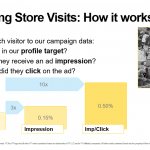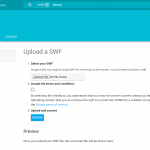MarTech Maven Scott Brinker: The Adobes And The Oracles missed the opportunity
As advertising tech used to be starting to trap hold just a few years in the past, he said, there was once a window to create an trade-wide platform that went beyond suites.
Scott Brinker, easiest recognized for his slide depicting the icon jungle that is marketing technology, is surprised that the big animals haven’t taken over.
the big animals (my term) consult with the large advertising automation suites that promise an “end-to-finish resolution” to no matter entrepreneurs need.
“i might have thought [mid- to large-sized companies] would have Adobe or Salesforce at its center,” he told me.
(Brinker, the co-founder and CTO of interactive content material advertising and marketing agency Ion Interactive and the creator of the chiefmartec.com weblog, can be this system Chair of our upcoming “MarTech: the selling Tech conference” in March in San Francisco. His new ebook, “Hacking advertising: Rethinking marketing administration in a software World,” comes out next month.)
instead, he sees firms using Salesforce for consumer relationship management (CRM), Oracle’s BlueKai for its data administration platform, Adobe for its web experience manager, Marketo for advertising and marketing automation around e mail, a Sprinklr for social media management and an assortment of other instruments for other tasks.
that is “a little surprising,” Brinker stated, “for the reason that imaginative and prescient put forth wasn’t just to create a portfolio [of tools], however an end-to-finish [solution].”
but, he brought, there are “only a few circumstances of firms of measurement which have standardized on a vendor” like Adobe or Oracle. Brinker mentioned he isn’t “buying the end-to-finish answer,” when you consider that, as a minimum for the short term, many corporations make the most of a “heterogenous advertising stack.”
Heterogenous, as in a music component gadget. you can mix and match best-of-breed music components into the song machine you in reality need — the amplifier/tuner from this firm, the audio system from that one and, once upon a time, a one at a time-sourced turntable, cassette deck and CD participant. It used to be the counterweight to the all-in-one tune console.
Brinker agreed that the present combine-and-suit advertising tech stack rather resembles the sort of part device. And, helping and doubtlessly accelerating that approach, a growing number of small corporations are excited by being the cloud-connecting middleman between business instruments.
“neglected probability”
as a substitute of having your tech particular person care for the API and integration factors between your social administration platform and your purchaser relationship management (CRM) machine, for example, you, the marketer, can connect them by way of Zapier’s dashboard. Or that you must appoint different workflow automators like Workato, Azuqua or Bedrock data.
Brinker additionally pointed to equivalent integration roles for section and Cloud components. He describes such instrument-stitching companies as “advertising middleware” and includes tag administration techniques as a result of they are a more or less “advertising and marketing information pipeline.”
that very same orientation is in the back of LeadPages’ unencumber late last 12 months of its middle product for managing leads across electronic mail carrier suppliers, webinars, CRMs and other tools.
Germany-based CampaignChain has in a similar way launched what it describes as “a cockpit for digital advertising and marketing” that may manage different advertising tools. The just lately released Databox mobile app tracks your most important standing indications — like web site site visitors or electronic mail signups — throughout a portfolio of instruments.
this combination-and-matching, Brinker mentioned, “is partly the result of a overlooked opportunity via the Adobes and Oracles. When this stuff used to be simply beginning, i assumed there was a ignored probability for an ecosystem.” as an alternative of all-in-one advertising clouds, he recalled, the Adobes and the Oracles could have made “a platform play.”
In other phrases, imagine what Brinker’s MarTech panorama slide would look like these days, if Google had been an early, main participant in this area.
instead of a large suite that allowed integration with smaller purposes — proprietary advertising clouds like Oracle, Salesforce, Adobe, IBM and others that offer app marketplaces and APIs — Google almost definitely would have created an open supply platform, a couple of principal applications and instruments for developers to sign up for in.
In other phrases, a kind of Android for advertising and marketing know-how.
Brinker mentioned that at this point, it continuously makes extra experience to have multiple advertising and marketing tech instruments as an alternative of a single end-to-end resolution, just because advertising itself is all of a sudden changing in so many guidance.
There’s advertising’s an increasing number of overlapping relationship with gross sales and customer support, for example. clients — in B2C, but particularly in B2B — are conducting their very own intensive on-line research of backgrounders and critiques. this implies they’re regularly pre-offered and manner down the funnel of decision-making by the point they reach a salesman.
“Animals Have Gotten Out”
customer service, at the least the web version, has grow to be blended with pass-promoting and data bases, including new alternatives for developing demand. Predictive analytics and multi-layered targeting are generating further ways marketers can direct their pitches.
Many retail shops are evolving into storefronts for online commerce. And any effort to summarize the impact on advertising of social media or mobile is nearly out of date by the time it’s uttered.
having a look ahead from lately’s vantage level, Brinker sees each and every category as having one or two providers “that dominate the portfolio,” around which there’s “a really various set of choices.” an enormous advertising suite may have a number of options that dominate a class, like Salesforce’s CRM, Adobe’s web experience manager or Oracle’s data capabilities — or the category dominator generally is a smaller player.
but he recounted that this topology might be upset if open source instruments actually commence to take dangle, the way in which they’ve in, say, web content administration with WordPress and other tools.
It’s gotten “harder and more difficult to think about one firm to [cover] all the industry,” stated the man who has visually proven how numerous the “entire business” is.
the chance to create the connecting infrastructure is now over, Brinker referred to, because “the market is maturing to the point the place it realizes it doesn’t want a platform.”
“Now, the entire animals have gotten out.”
(Some photography used beneath license from Shutterstock.com.)
marketing Land – web advertising news, methods & tips
(36)

















